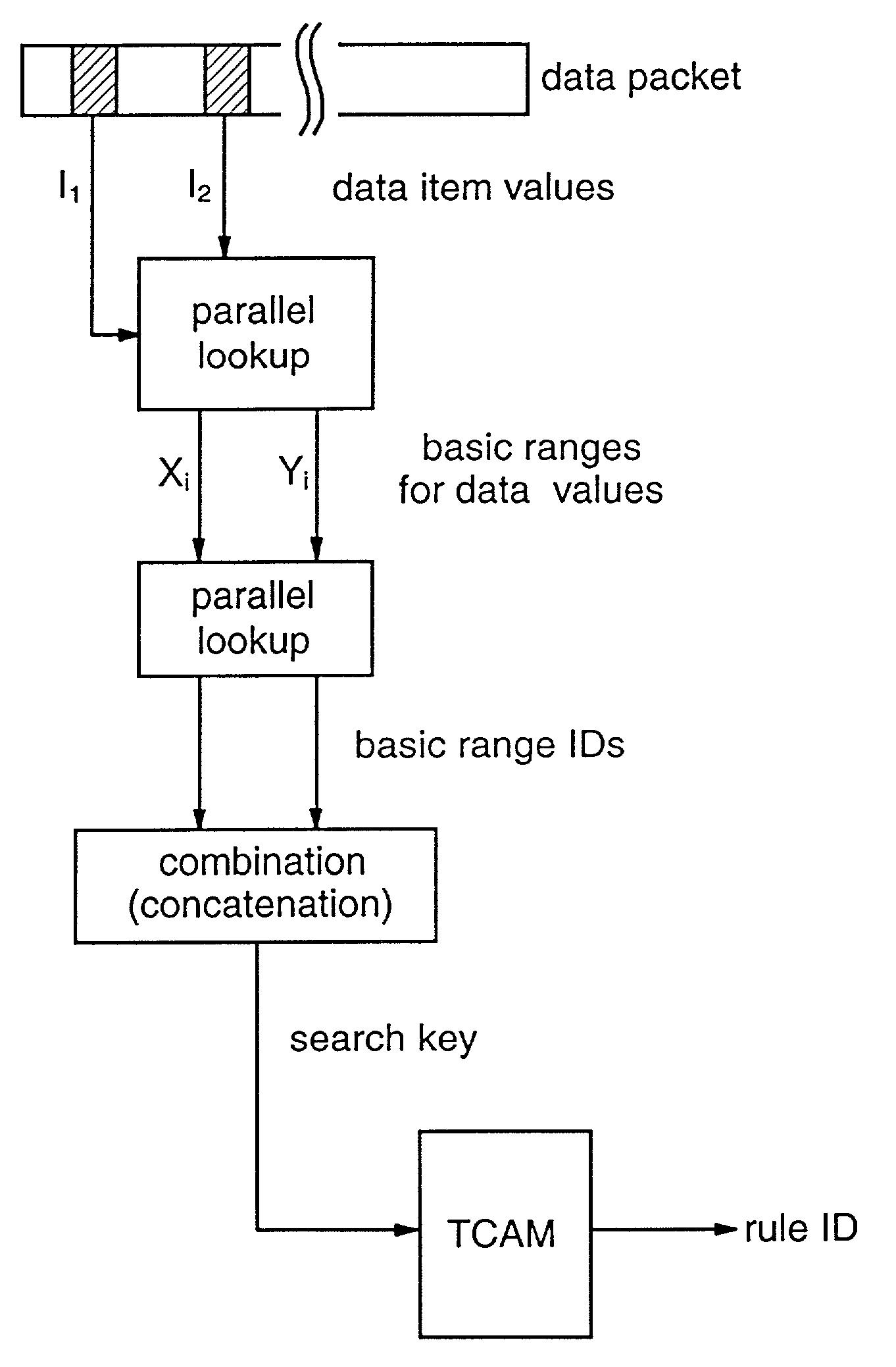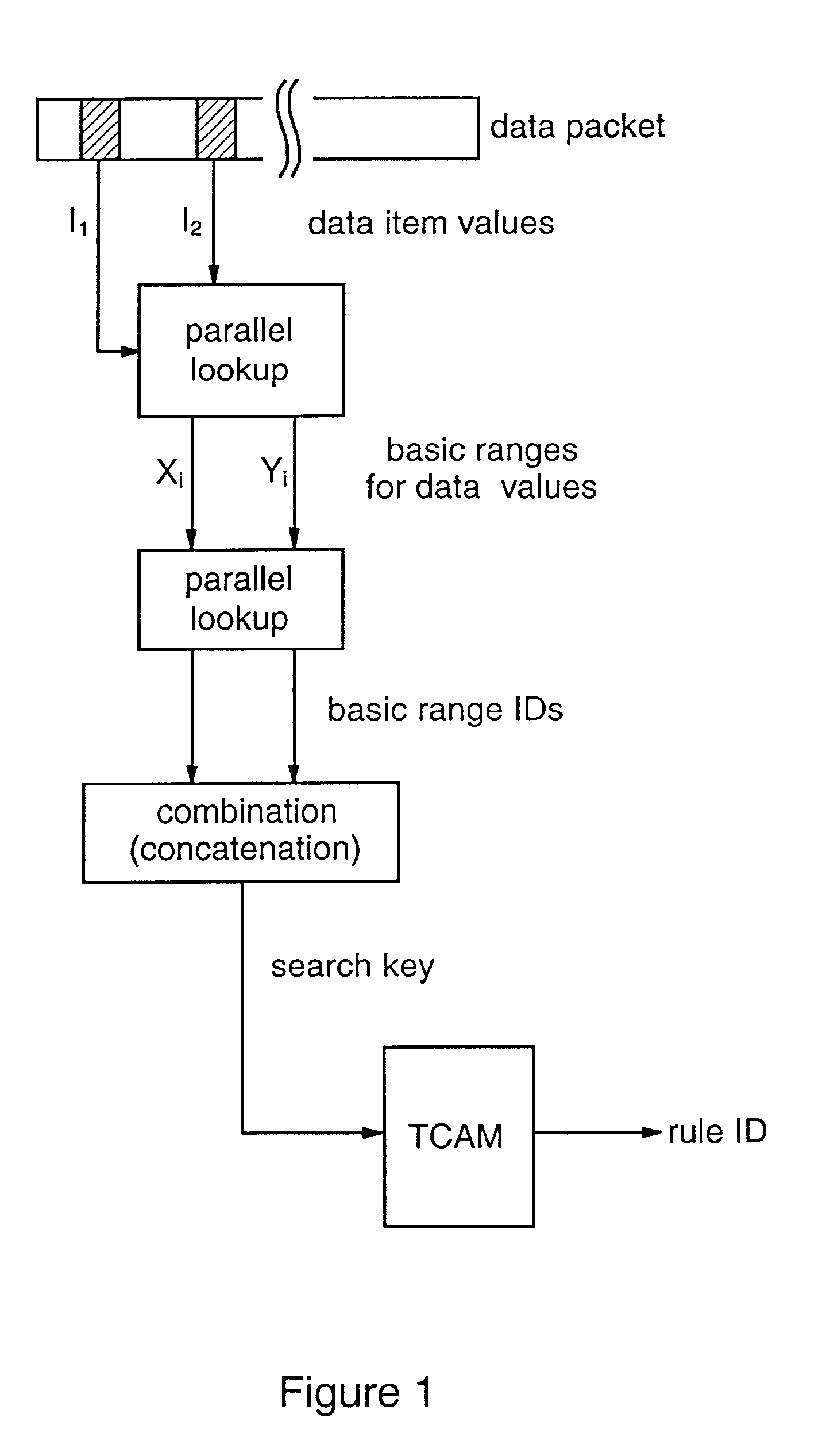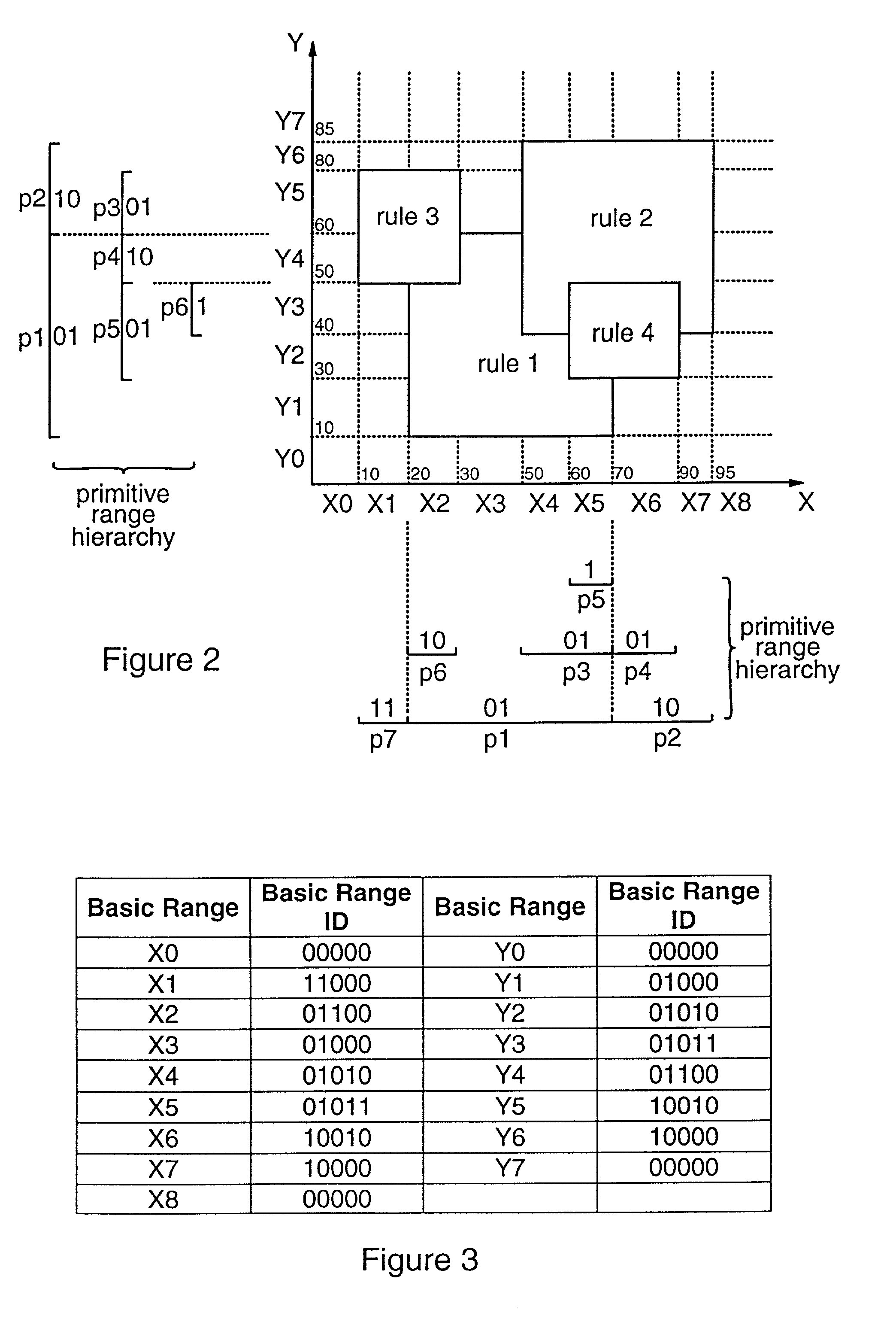Packet classification
a data packet and packet technology, applied in the field of packet classification, can solve the problems of difficult updating of data structure to accommodate, requiring a lot of storage, so as to achieve high efficiency data structure, efficient use of tcam, and high storage efficiency
- Summary
- Abstract
- Description
- Claims
- Application Information
AI Technical Summary
Benefits of technology
Problems solved by technology
Method used
Image
Examples
Embodiment Construction
[0054]The diagram of FIG. 1 gives a general overview of a first embodiment of a packet classification system. This system is employed for multidimensional packet classification where packets are classified according to the values of a plurality of data items in the packet header. For simplicity it is assumed here that packet classification is based on only two data items, such as source and destination address, in the packet format. In general, of course, multiple data items may be involved in the classification process, but the operation for multiple dimensions will be readily apparent from the following description of two-dimensional systems. The two data items to be evaluated are illustrated by the shaded sections of the data packet at the top of FIG. 1. First, the packet is parsed to identify the data item values in question, and the resulting data values (here I1 and I2) are supplied as inputs to a parallel memory lookup operation. For each input value I1 and I2, this operation...
PUM
 Login to View More
Login to View More Abstract
Description
Claims
Application Information
 Login to View More
Login to View More - R&D
- Intellectual Property
- Life Sciences
- Materials
- Tech Scout
- Unparalleled Data Quality
- Higher Quality Content
- 60% Fewer Hallucinations
Browse by: Latest US Patents, China's latest patents, Technical Efficacy Thesaurus, Application Domain, Technology Topic, Popular Technical Reports.
© 2025 PatSnap. All rights reserved.Legal|Privacy policy|Modern Slavery Act Transparency Statement|Sitemap|About US| Contact US: help@patsnap.com



